Top 10 Most Beautiful Historical Sites In Denmark
Denmark's ancient sites are diverse and fascinating, including great castles like Amalienborg and the amazing Viking royal site at Jelling. Visitors to ... read more...medieval Denmark can visit Copenhagen's iconic Assistens Cemetary and the city's Museum of Danish Resistance, as well as Ladby, which explores the country's Viking heritage. Here are the most beautiful historical sites in Denmark you should visit.
-
Frederik II erected Frederiksborg Castle in 1560, and Christian IV later extended it. The palatial complex in Hillerd, Denmark, today incorporates amazing architecture visible in the Knight's Hall and Baroque gardens, as well as a museum chronicling Denmark's history since the 15th century.
The castle was destroyed by fire in 1859, but it was fully restored and reopened as the Danish Museum of National History in 1882. The majority of the museum's collection is made up of artwork linked to Denmark's past, such as portraits of former rulers and paintings of historical events. Visitors can also see the state rooms and portions of the castle that were not damaged by the fire.
Frederiksborg Castle is a lot to take in in one visit — it's enormous and detailed, and you're better off just viewing what interests you and what you can manage – plan on spending at least half a day if you want to stroll the gardens as well.
Slotshaven is a formal baroque garden located just north of the castle, Indelukket is an 18th/19th century Romantic garden and landscape, and Lille Dyrehave is a wood planted in the early 19th century for oak, which was principally utilized in boat building to restore the Danish fleet. They make for a lovely afternoon stroll. The castle is open all year, though hours are substantially shorter between November and March. When you arrive, be sure to pick up an audio guide (included in the ticket price).
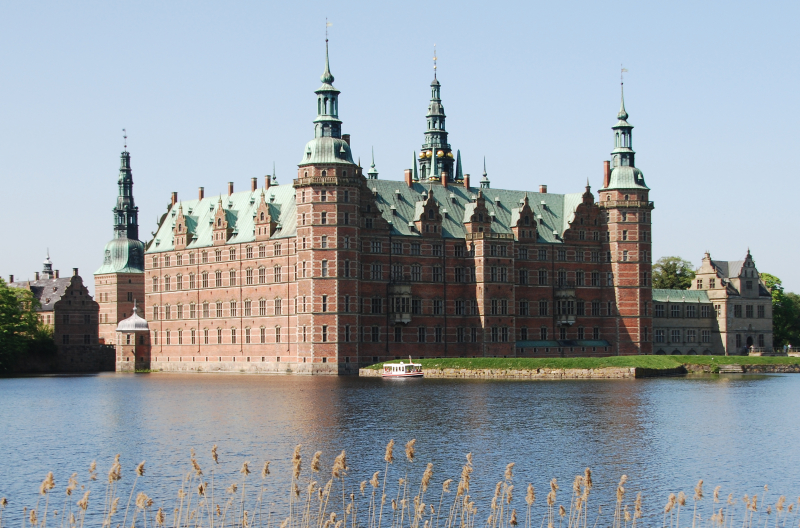
en.wikipedia.org 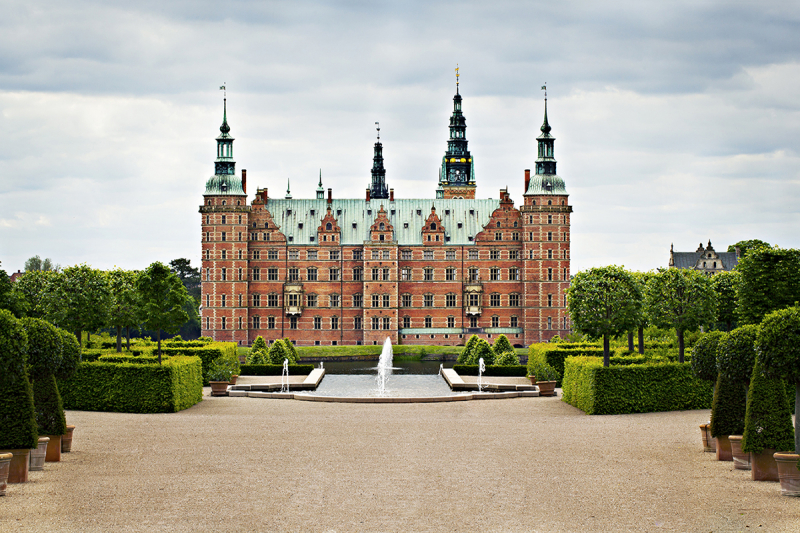
dnm.dk -
The Viking Ship Museum is Denmark's national ship museum for medieval and prehistoric vessels, located in Roskilde. The Viking Ship Museum provides fascinating insight into the world of the Vikings and their age. The Skuldelev ships are the five Viking ships on show at the Viking Ship Museum. They were excavated close at Skuldelev, maybe to blockade enemy vessels.
The Viking ships range in length from a 30 metre warship called "wreck 2" to an 11.2 metre fishing craft. Each one has been meticulously restored. The Viking Ship Museum in Roskilde features an exhibit on a Norwegian attack, as well as a significant collection of actual ancient vessels and reconstructions.
The Viking Ship Hall, Museum Island with its boatyard and workshops, and museum harbor are all located on the magnificent Roskilde Fjord. The original Skuldelev Viking ships are the major focus of the museum, although there is also a modest display about the Roskilde ships and numerous temporary exhibitions with a broader scope. The Viking Ship Museum draws visitors from all over the world and serves as a significant gathering and entertainment location, offering a variety of activities and events for both children and adults. It is regarded as among the most beautiful historical sites in Denmark.
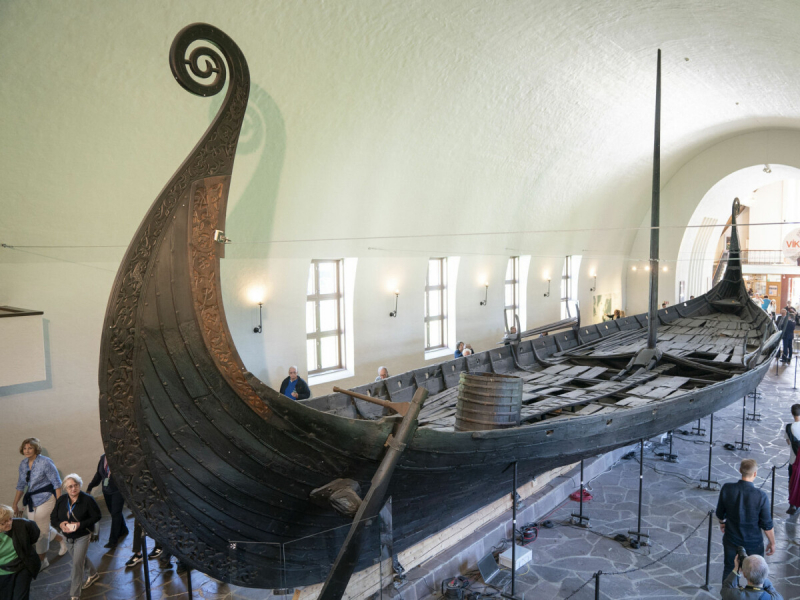
sciencenorway.no 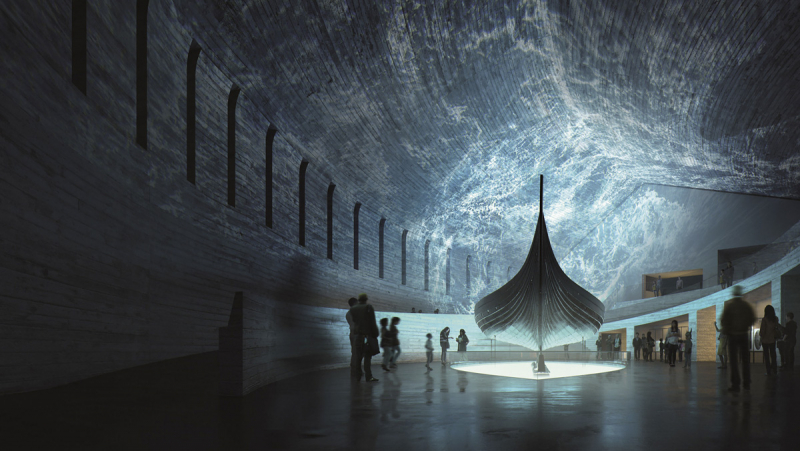
khm.uio.no -
Erik of Pomerania built the original version of Kronborg Slot or Kronborg Castle in Helsingr, Denmark, in the 1420s. This massively fortified fortification was known as Krogen or "the Hook." Kronborg Slot was turned into a Renaissance masterpiece by several royal owners, most notably Frederik II. It was adorned with towers, statues, columns, and a towering spire that symbolized royal might.
Kronborg Slot was destroyed by fire in 1629, repaired by Christian IV, and subsequently destroyed by Swedish forces in 1658. It was used as a royal house until roughly 1690, and then as an army barracks in the 18th century. Kronborg Slot is now a UNESCO World Heritage site and one of the most famous castles in Northern Europe.
Kronborg Slot is currently open to the public, restored to its original splendour as it would have appeared in the 16th and 17th centuries. Visitors can see the extraordinarily long 16th century Great Hall, as well as a statue of and exhibition about Viking chief Holger Dansk, inside its sumptuous walls. The castle also houses a Maritime Museum, and free guided tours in both Danish and English are given at 11:00am and 3:00pm for the Casemates, and 11:30am and 1:30pm for the Royal Apartments. Actors placed throughout Kronborg Slot occasionally bring Shakespeare's drama to life in the dimly lighted stronghold.
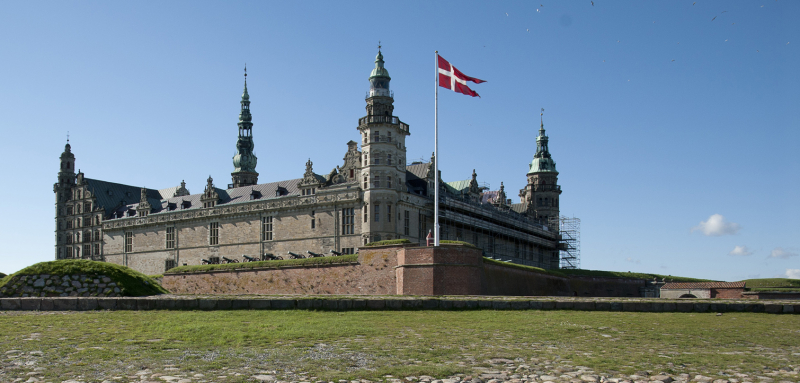
kongeligeslotte.dk 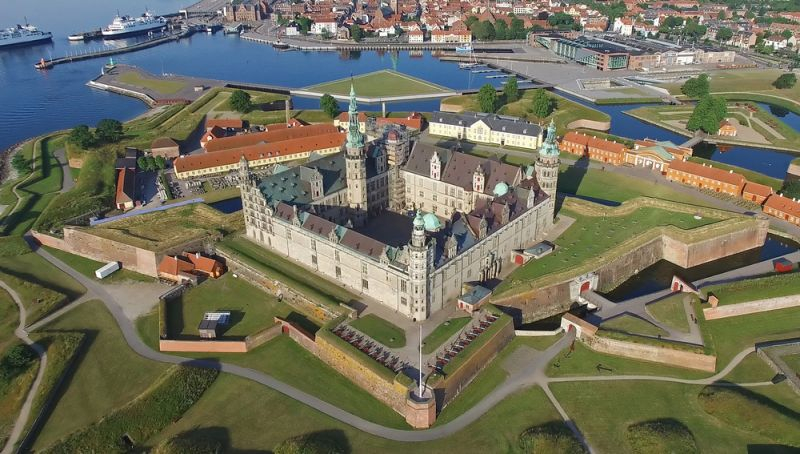
wantedineurope.com -
Amalienborg Slot in northern Copenhagen is a Rococo-style palace built under King Frederik V's orders. Amalienborg Slot, which consists of four structures arranged around a central courtyard, was finished in 1760. The palace is now home to the Danish royal family, although it was originally home to wealthy families. Christian IX's Palace, Christian VII's Palace, Christian VIII's Palace (now the Amalienborg Museum), and Frederik VIII's Palace are the four buildings. Amalienborg Slot is now the winter residence of the Danish royals.
Visitors can explore parts of Amalienborg Slot, examining royal collections and items and admiring the Rococo design of the palace, especially the elaborate Knight's Chamber. The palace is open everyday from June to September and on an irregular basis the rest of the year — it's better to call ahead for exact hours.
The palace's entrance hall, which has been restored to its eighteenth-century state, is also remarkable. The sculpture of Frederik V in the middle courtyard is said to have cost as much as Amalienborg Slot itself.
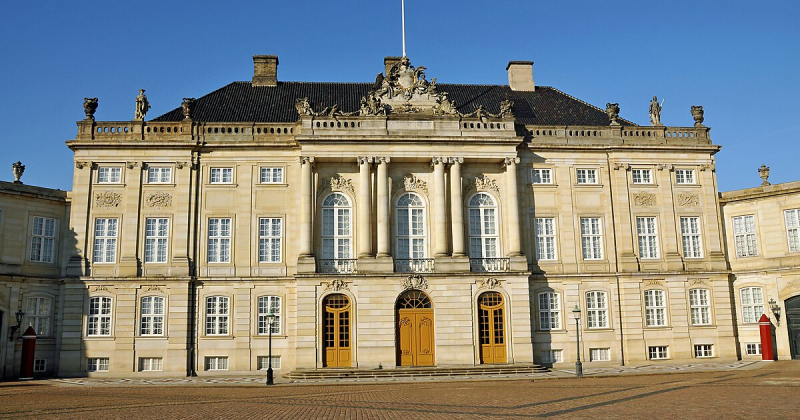
travel.sygic.com 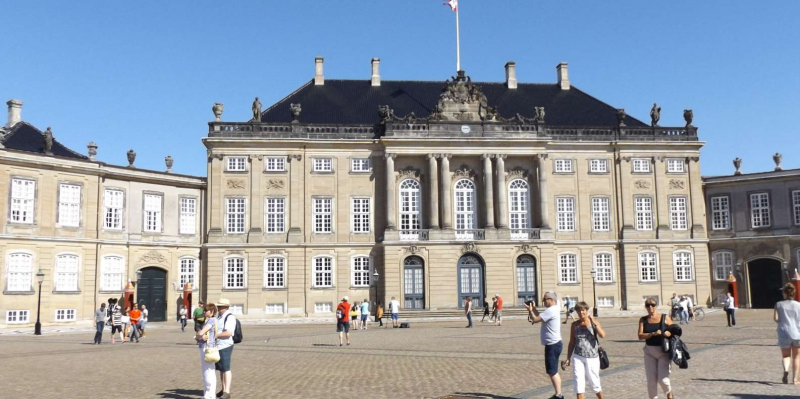
getyourguide.com -
Jelling, one of the most beautiful historical sites in Denmark that has a number of noteworthy 10th century artifacts. Originally the royal residence of Gorm the Old, Jelling is an important aspect of Danish history, especially since this Viking king was the start of the royal line that still dominates the country today.
Gorm and his son, Harald I Bluetooth, created various monuments at Jelling, including the largest grave mounds in Denmark. These are still quite well kept and can be seen at the location. Gorm was buried in the larger one, while the second is supposed to have been abandoned.
At Jelling, there are also two runic stones, the greater of which is considered to have been constructed by Harald and the smaller by Gorm before him. The Jelling Stones are runic stones that stand in front of Jelling Church, or 'Jelling Kirke,' which dates back to circa 1100.
Jelling Kirke was the third church built on the site, the first being a wooden structure built by Harald, who later converted to Christianity. A figure of Jesus on one of the stones also attests to this conversion.
Visit the Viking kings' home and marvel at the amazing monuments, which include runic stones, a church, and the largest burial mounds known from the Nordic Viking period. The Jelling site contains a tourist center called Kongernes Jelling, which houses a number of displays that illustrate the narrative of the monuments.
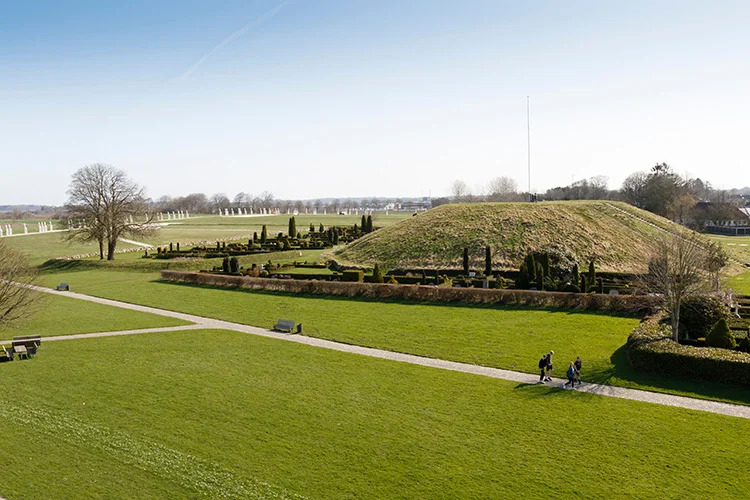
https://www.historyhit.com/ 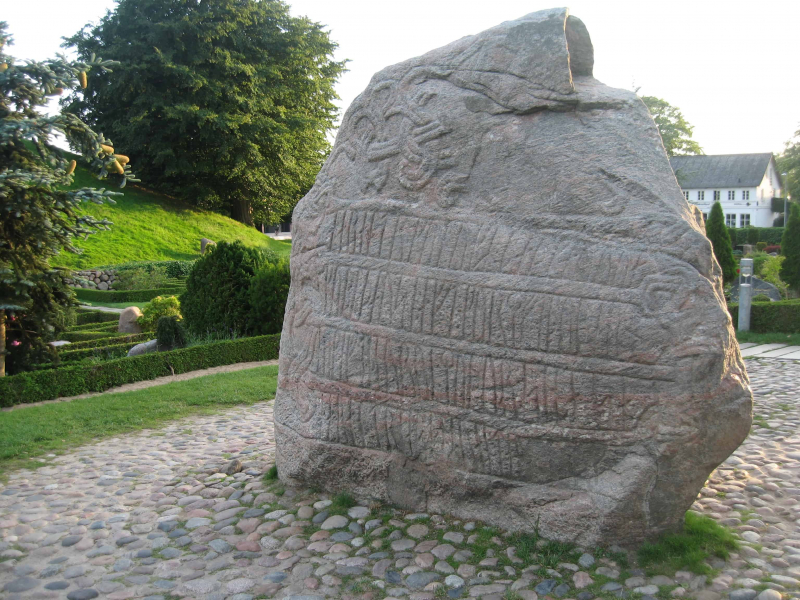
sophiesworld.net -
After the old fort on the site was undermined by a Swedish attack in 1658, King Frederik III ordered the construction of Kastellet in Copenhagen in 1663. It was largely reconstructed again in the nineteenth century as a jail, with the distinctly star-shaped building flanked by a moat.
During World War II, German forces utilized Kastellet as a base when occupying Copenhagen. Kastellet is now a military facility. Its grounds have been turned into a park that is open to the public, while there is no access to the fortification's interior.
The Citadel is still a working military base for the Danish Defense Ministry. Despite the area's ongoing military presence, the Citadel is now a calm, protected location that serves as a public park as well as a cultural-historical landmark. The location features two modest museums with limited hours of operation.
Every day at 12:00, the Central Guard House hosts a changing of the guard ceremony. On summer afternoons at 14.00, military concerts are held at the drill grounds. Concerts are also routinely organized by the Citadel Church.
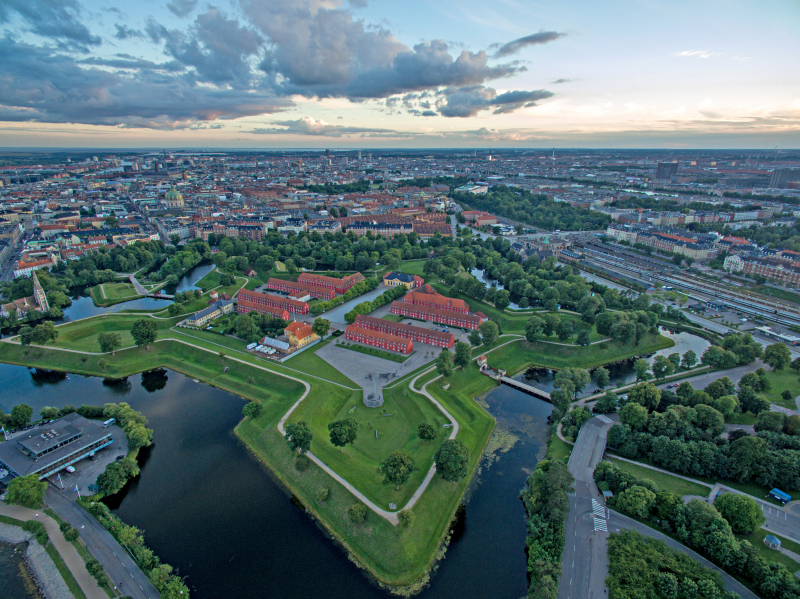
en.wikipedia.org 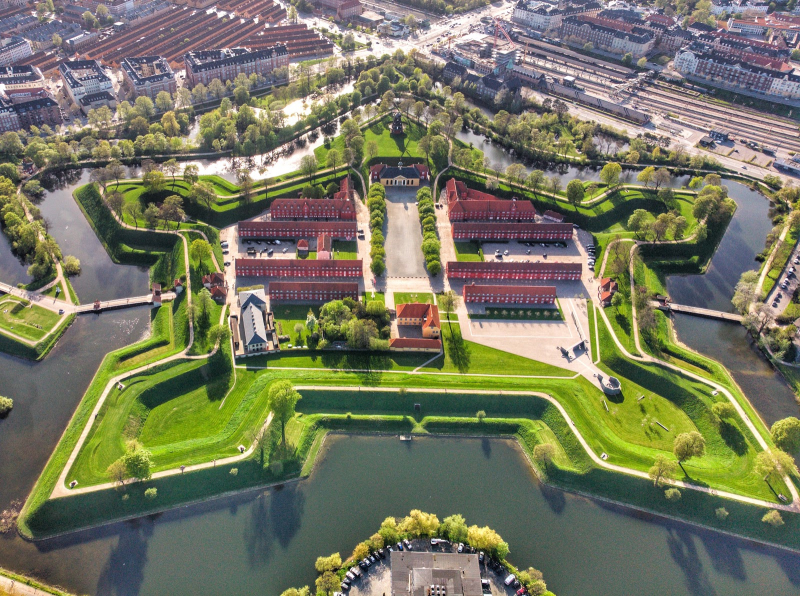
inspirock.com -
Aalborghus Castle, also known as 'Aalborghus Slot,' is a castle and former fortress in the Danish city of Aalborg. Visitors can now tour Aalborghus Castle and, perhaps most notably, its dungeons.
Aalborghus Castle was a half-timbered castle built from 1539 to 1555 on the direction of Lutheran King Christian III, first as a fortification. The location had formerly hosted a structure directly south of Christian's castle, which was referenced in Aalborghus material dating back to 1340. It was owned by Margrethe I and was also the site of King Hans' death in 1513 as a consequence of a riding accident. Aalborghus Castle is among the most beautiful historical sites in Denmark.
The castle is now located among its lush green surrounds, just a short walk from the port front. The east wing is all that remains of the ancient castle, and visitors are not permitted inside due to the building's administrative role.
You can, however, take a walk through the castle's magnificent grounds, and on some dates, the castle's dungeon and underground corridor, which shows a printed history of the location, are open to the public. All year, visitors can appreciate the castle's original stunning ambiance from the courtyard.
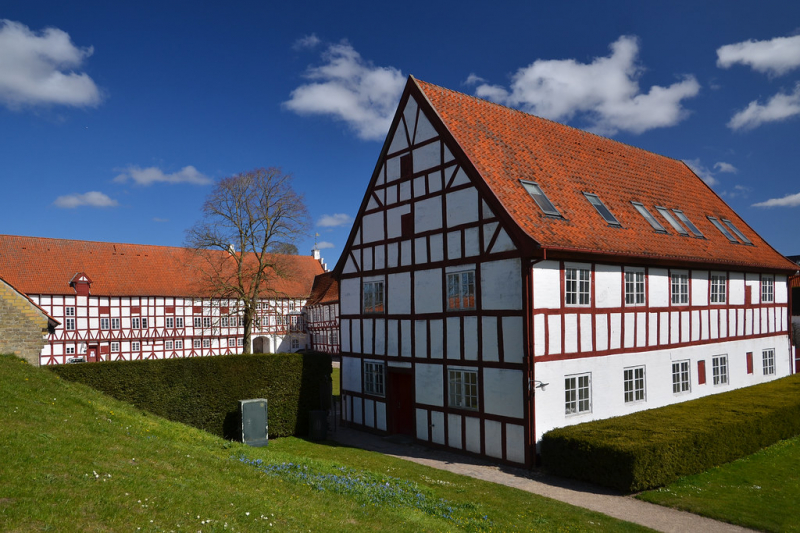
flickr.com 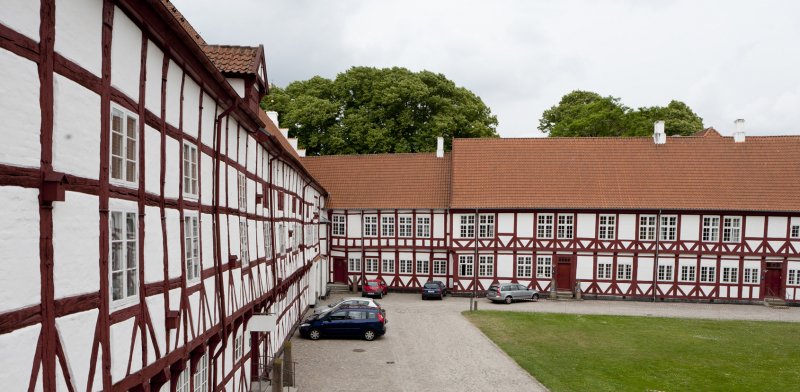
kongeligeslotte.dk -
Assistens Kirkegard is a cemetery in Copenhagen, Denmark, that was created in the eighteenth century in response to a plague outbreak. Because Copenhagen's existing cemeteries were unable to meet the demand for burial plots, Assistens Kirkegard was established.
Plots at Assistens Kirkegard became fashionable in the second part of the eighteenth century, and it now houses the graves of many of Denmark's most notable personalities, including Hans Christian Andersen and Soren Kierkegaard. Assistens Kirkegard is also a park with numerous recreational facilities.
Assistens Kirkegard is Denmark's most well-known cemetery. A plague outbreak in 1711 killed over 23,000 residents and put existing burial places under strain. As a result, five new cemeteries were established. The situation deteriorated further in the 1750s, and Assistens Kirkegard was built in 1757 and inaugurated in 1760.
Originally a pauper's graveyard, it became a fashionable burial destination in 1785 after First Secretary of the War Chancellery Johan Samuel Augustin made requests to be interred there. It quickly became a popular excursion destination – so popular, in fact, that legislation was enacted prohibiting the consumption of food and drink, as well as the sale of it by on-site gravediggers.
Assistens Kirkegard is still a graveyard today, but it is also a popular tourist destination due to the large number of renowned persons buried there. It is also the most significant green space in the inner Nrrebro district.
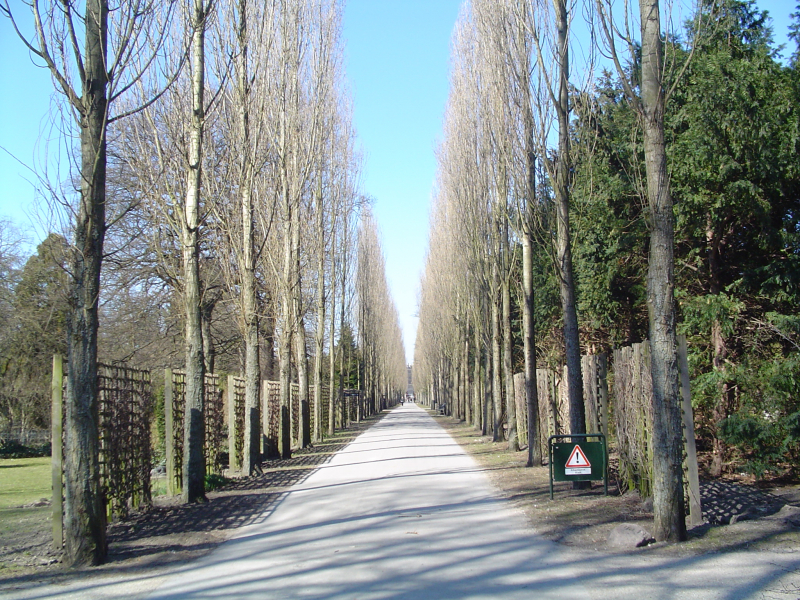
vi.wikipedia.org 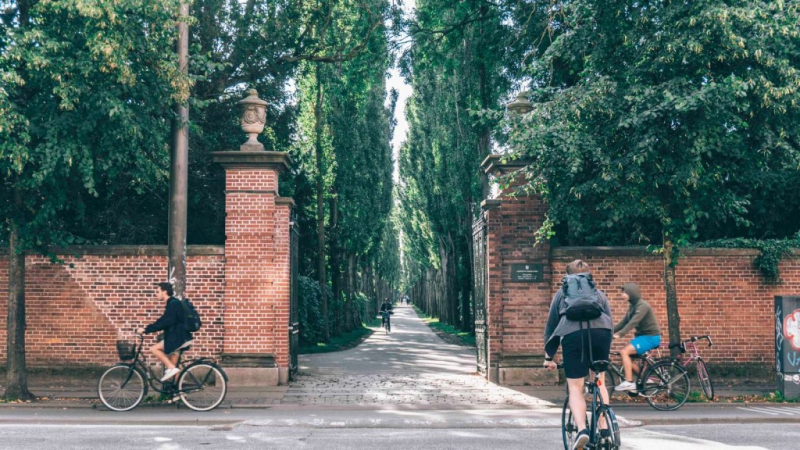
visitcopenhagen.com -
Frihedsmuseet, or "The Museum of Danish Resistance," is a Copenhagen museum dedicated to the Danish Resistance effort against Nazi occupation from 1940 to 1945. It is regarded as one of the most beautiful historical sites in Denmark.
The Danish Resistance Movement was an underground movement that fought the German occupation of Denmark during WWII. Members of the gang were involved in a variety of unlawful actions, including publishing unauthorized publications, spying, and sabotage. Until 1944, resistance agents killed an estimated 400 Danish Nazis, informers, and collaborators. Danish leaders backed the resistance movement after the war.
The museum is a branch of the Danish National Museum, which was founded in 1807 and has significantly extended its displays as more recent history has unfolded. All of the exhibits in the chronological display at Frihedsmuseet are available in both Danish and English. Frihedsmuseet intends to teach future generations about the far-reaching and still palpable repercussions of war.
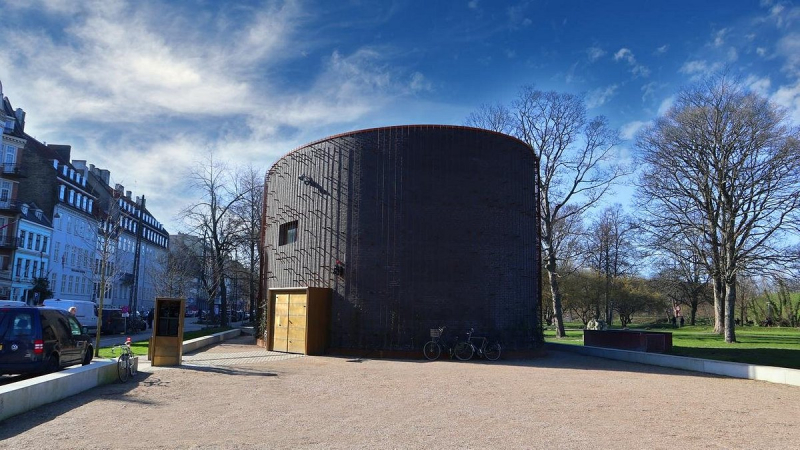
tripadvisor.com 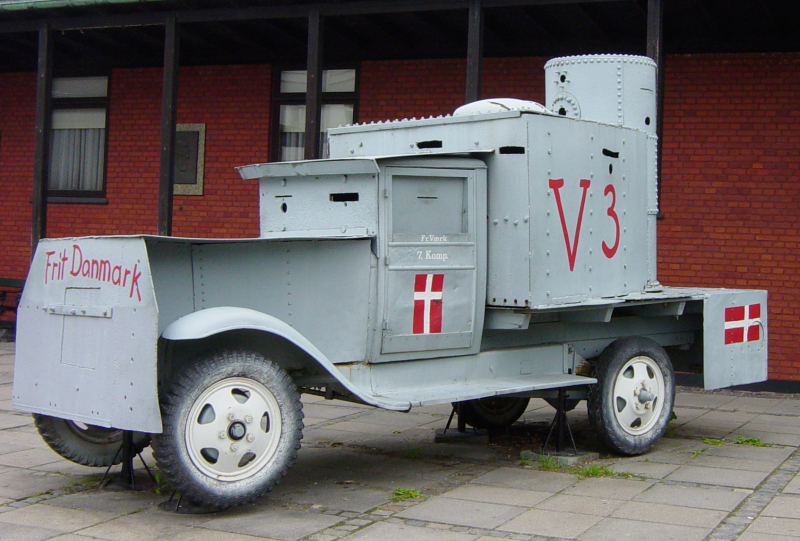
https://en.wikipedia.org/ -
The Ladby Burial Ship, a Viking ship grave discovered in Ladby, Denmark, is housed in the Viking Museum. The ship is thought to be the burial location of a prince or other leader, such as a chieftain, and dates back to around 925 AD. The Ladby Burial Ship was dragged up the hill and loaded with burial goods such as jewelry and even animals. The Viking Museum at Ladby, which displays the Ladby Burial Ship among other excavation artifacts, provides insight into the history of the Vikings and their lives in the area.
Today, the Viking Museum at Ladby, open from 10 a.m. to 4 p.m. Tuesday through Sunday, displays many of the ship's discoveries alongside an interactive narrative of the Vikings who would have lived on Funen. The Ladby ship's 2,000 rivets and the imprint left by the planks – the wood having rotted away long ago – are encircled by a glass exhibit and darkly lighted for preservation, adding to the sense of awe.
Aside from the excavated ship, the museum also has a reconstructed ship at the time of burial, complete with the deceased chieftain on a bed surrounded by his dogs, horses, and grave goods.
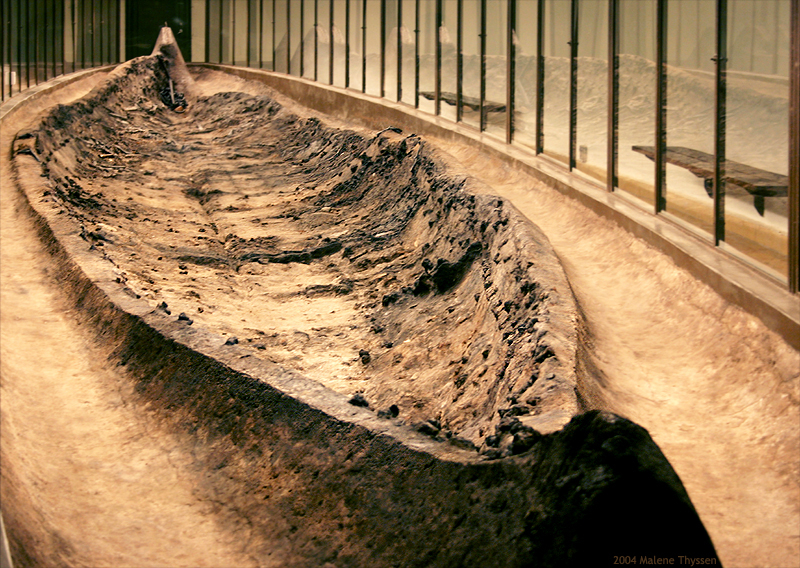
en.wikipedia.org Video: Douglas L's Youtube Channel































